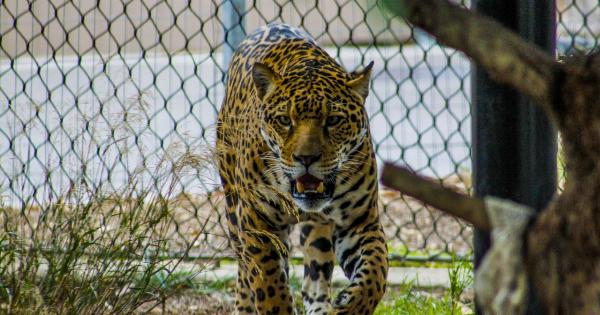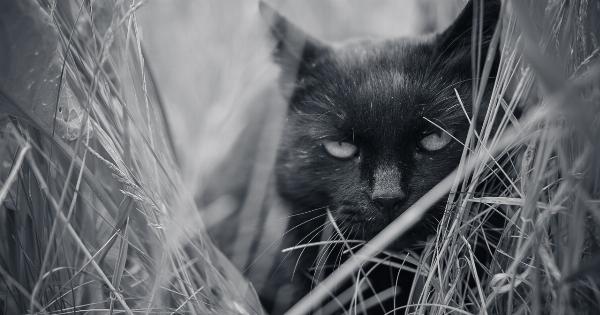Cats have long been regarded as enigmatic creatures, often associated with a mysterious and elusive nature. Their ability to navigate the physical world with grace and agility has fascinated humans for centuries.
While we often marvel at their impeccable hunting skills and independent demeanor, there are also numerous myths and beliefs surrounding their behavior and cognitive abilities. In this article, we will delve into the concept of the cat’s “seventh mind” and debunk common beliefs while exploring the truth behind their mysterious nature.
1. The Elusive Mind: Understanding the Cat’s Psyche
For many cat owners, deciphering feline behavior can seem like an impossible task. It is commonly believed that cats possess a “seventh mind” that allows them to perceive the world in ways humans cannot comprehend.
This belief has led to many misconceptions about their cognitive abilities. However, scientists and animal behaviorists argue that cats do not possess a separate mind but rather have unique instincts and sensory capabilities that contribute to their behavior.
2. Night Vision: Separating Fact from Fiction
Cats are renowned for their exceptional night vision, fueling the belief that they possess an otherworldly ability to see in complete darkness.
While it is true that cats have remarkable visual adaptations that allow them to navigate low-light environments, they cannot see in absolute darkness. Their eyes contain a high concentration of rod cells, which are responsible for detecting light in dimly lit conditions.
This enables cats to see better than humans in low-light environments but does not grant them the ability to see in pitch-black darkness.
3. Superior Hearing: The Acoustic Wonders of Felines
Another aspect contributing to the notion of the cat’s “seventh mind” is their acute sense of hearing. Cats possess highly sensitive ears that can detect sounds at a much higher frequency range than humans.
This impressive auditory ability allows them to pick up on subtle noises, making them excellent hunters and adept at locating prey. While their hearing is indeed superior, it is a result of biological adaptations rather than a separate realm of consciousness.
4. Purr-fect Communication: Analyzing the Feline Vibrations
Cats have a unique way of communicating through purring. This soothing sound, often perceived as a sign of contentment, has led to the belief that cats use purring to heal themselves or transmit positive energy.
However, recent studies suggest that cats purr for various reasons, including relaxation, bonding, and even pain relief. Purring is thought to stimulate the release of endorphins, providing a natural source of comfort. While the exact mechanisms behind purring are still not fully understood, it is not evidence of a separate state of mind.
5. Mysterious Intuition: Unveiling the Secrets of the Cat
Cats are known for their uncanny ability to anticipate events or react to subtle changes in their environment. This has given rise to the belief that they possess an intuitive sixth sense, enabling them to perceive things that elude human perception.
While cats are highly attuned to their surroundings and have exceptionally acute senses, their apparent intuition can often be attributed to heightened observation skills, non-verbal cues, and an innate understanding of the natural world.
6. Independent Nature: The Myth of the Lone Feline
Cats are often characterized as solitary creatures, preferring to roam and hunt alone. This depiction has perpetuated the belief that cats have a solitary or independent mind that separates them from other social animals.
In reality, cats are not inherently solitary, and their social structure can vary greatly depending on factors such as environment, upbringing, and individual personality. Many cats form deep bonds with their human companions and other animals, disproving the belief that they possess an exclusive seventh mind that isolates them from social interactions.
7. Telepathic Connections: Exploring Feline Empathy
Cat owners often report instances where their feline friends seem to sense their emotions or intentions. This has led to the speculation of cats possessing telepathic abilities or a heightened form of empathy.
While cats can be highly perceptive and responsive to human emotions, their understanding is based on observation, body language, and familiar cues rather than psychic connections. Cats are adept at picking up subtle changes in their environment, including changes in their owners’ behavior, which may contribute to the perception of telepathy.
8. Jumping and Landing: Untangling the Cat’s Mid-Air Mastery
Cats are renowned for their extraordinary jumping and landing abilities, often landing gracefully from heights that would pose a risk to other animals.
This exceptional skill has led to the belief that cats possess a supernatural “seventh mind” that grants them mid-air control. However, cats’ exceptional acrobatics can be attributed to their innate reflexes, incredible balance, and a specialized inner ear structure that enables them to maintain equilibrium during complex maneuvers.
Their mid-air mastery is a result of biological adaptations, not a separate realm of consciousness.
9. Tail Language: Understanding the Feline Communication
Cats communicate using a variety of signals, with their tails playing a crucial role in conveying messages to other felines and humans.
The belief that cats possess a mysterious seventh mind is often associated with the idea that their tails hold secret meanings and insights into their state of mind. While it is true that a cat’s tail position can provide valuable insights into their emotional state, it is a form of non-verbal communication rather than a hidden plane of consciousness.
10. The Enduring Enigma: Embracing the Cat’s Uniqueness
Despite scientific advancements in understanding feline behavior, cats will likely retain their air of mystery for the foreseeable future.
While it may be tempting to attribute their unique abilities and behaviors to a separate realm of consciousness or mystical powers, it is important to recognize the scientific explanations behind their fascinating attributes. By embracing the reality of their remarkable adaptations and instincts, we can find a deeper appreciation for these incredible creatures and their place in our lives.





























